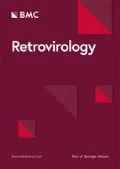Background
ATL is a highly aggressive leukemia/lymphoma which was first proposed as a new disease entity in 1977. The long clinical latency and low incidence of ATL indicate that some genetic changes are involved in malignant transformation and monoclonal expansion of HTLV-1-infected cells. Monoclonal proliferation of HTLV-1-infected cells is observed in a part of the virus carriers, who are considered to be the high risk group for development of ATL [1].
We reviewed the process of senescence and how proteins allow the monoclonal proliferation of ATL cells.
Results
Constitutive activation of STAT as well as functional impairment and stabilization of p53 protein found in the PBMCs of ATL patients are supposed to be one base for ATL development [2, 3]. In addition to deletion and/or methylation of the p16INK4A gene, they suggest the inhibition of senescence in ATL cells.
Furthermore, the soluble form of CD30 (sCD30) is elevated in serum of ATL patients and correlates with the aggressiveness of ATL [4] (Our observation) and it is useful marker which indicates the intervention of initiation therapy (Our observation) suggesting that sCD30 allows the proliferation and survival of ATL cells.
Conclusions
Not only the inhibition of senescence by impaired function or constitutive activation of proteins in ATL cells, but also immune regulation by soluble proteins in serum of HTLV-1-infected patients must be required for the progression of ATL.
References
Takemoto S, Matsuoka M, Yamaguchi K, Takatsuki K: A novel diagnostic method of adult T cell leukemia: Monoclonal integration of human T cell lymphotropic virus type I provirus DNA detected by inverse polymerase chain reaction. Blood. 1994, 84: 3080-5.
Takemoto S, Mulloy JC, Cereseto A, Migone TS, Patel BKR, Matsuoka M, Yamaguchi K, Takatsuki K, Kamihira S, White JD, Leonard WJ, Waldmann T, Franchini G: Proliferation of adult T cell leukemia/lymphoma cells is associated with the constitutive activation of JAK/STAT proteins. Proc Natl Acad Sci USA. 1997, 94: 13897-902. 10.1073/pnas.94.25.13897.
Takemoto S, Trovato R, Cereseto A, Nicot C, Kislyakova T, Casareto L, Waldmann T, Torelli G, Franchini G: p53 stabilization and functional impairment in the absence of genetic mutation or the alteration of the p14ARF MDM2 loop in ex vivo and cultured adult T cell leukemia/lymphoma cells. Blood. 2000, 95: 3939-44.
Nishioka C, Takemoto S, Kataoka S, Yamanaka S, Moriki T, Shoda M, Watanabe T, Taguchi H: The serum level of soluble CD30 correlates with the aggressiveness of adult T cell leukemia/lymphoma. Cancer Sci. 2005, 96: 810-815. 10.1111/j.1349-7006.2005.00106.x.
Author information
Authors and Affiliations
Corresponding author
Rights and permissions
This article is published under license to BioMed Central Ltd. This is an open access article distributed under the terms of the Creative Commons Attribution License (http://creativecommons.org/licenses/by/2.0), which permits unrestricted use, distribution, and reproduction in any medium, provided the original work is properly cited.
About this article
Cite this article
Pornkuna, R., Takemoto, S., Uzawa, K. et al. Proteins function for anti-senescence and monoclonal proliferation of ATL cells. Retrovirology 8 (Suppl 1), A127 (2011). https://doi.org/10.1186/1742-4690-8-S1-A127
Published:
DOI: https://doi.org/10.1186/1742-4690-8-S1-A127

